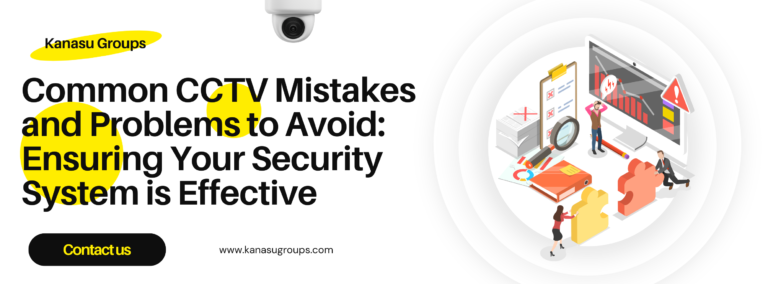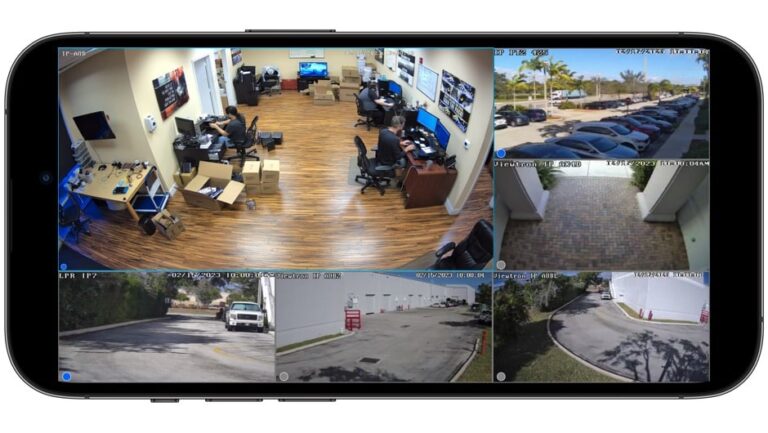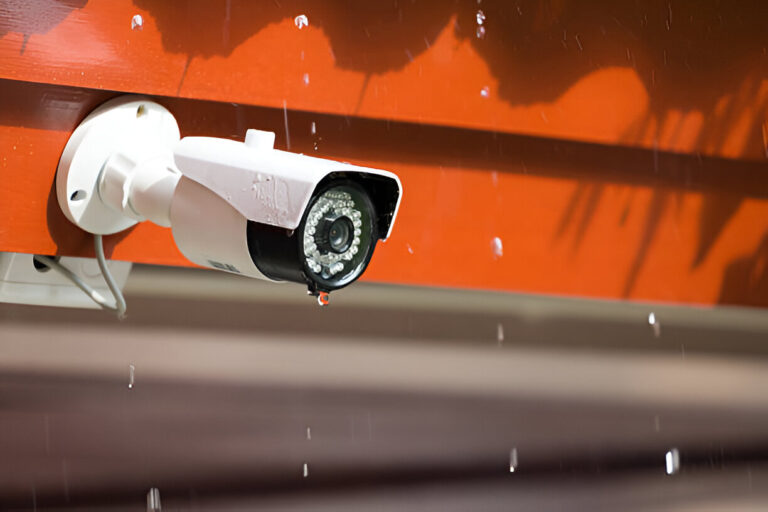A Step-by-Step Guide to the CCTV Installation Process: Securing Your Property with Confidence
CCTV (Closed-Circuit Television) systems have become an essential part of modern security solutions, providing continuous surveillance, crime deterrence, and peace of mind. Whether you’re installing a CCTV system for your home or business, understanding the CCTV installation process can help ensure that your system is set up for optimal performance. At Kanasu Groups, we specialize…
CCTV (Closed-Circuit Television) systems have become an essential part of modern security solutions, providing continuous surveillance, crime deterrence, and peace of mind. Whether you’re installing a CCTV system for your home or business, understanding the CCTV installation process can help ensure that your system is set up for optimal performance.
At Kanasu Groups, we specialize in professional CCTV installation services, providing comprehensive solutions to secure your property in Bangalore. In this blog, we’ll walk you through the step-by-step process of CCTV installation, covering everything from planning to final setup.
Step-by-Step Process of CCTV Installation
- Assessing Your Security Needs
The first step in any CCTV installation project is to assess the security needs of the property. A professional installer will conduct a thorough inspection of your home or business, identifying the most vulnerable areas and determining the type and number of cameras required.
- Key Considerations:
- What areas require surveillance?
- Do you need indoor or outdoor cameras?
- Are there any blind spots to cover?
- What kind of lighting conditions (day/night) are present?
- Choosing the Right CCTV System
Once your security needs are assessed, the next step is selecting the right CCTV system. There are different types of cameras (e.g., dome, bullet, PTZ) and recording devices (DVR or NVR) to choose from based on your unique requirements.
- Types of Cameras:
- Dome Cameras: Ideal for indoor surveillance and offer a discreet design.
- Bullet Cameras: Typically used for outdoor surveillance and long-range monitoring.
- PTZ Cameras: Pan, tilt, and zoom capabilities for more flexible monitoring.
- Recording Devices:
- DVR (Digital Video Recorder): Works with analog cameras and stores footage on hard drives.
- NVR (Network Video Recorder): Compatible with IP cameras and stores footage digitally on the cloud or on-site.
- Planning the Camera Placement
Proper camera placement is critical to achieving maximum coverage. Professional installers will strategically place cameras in locations that cover key entry points, high-traffic areas, and any blind spots.
- Best Practices for Camera Placement:
- Place cameras at all entrances and exits.
- Monitor driveways, parking areas, and garages.
- Cover large indoor spaces like lobbies, halls, and storerooms.
- Ensure outdoor cameras have weatherproof features and night vision.
- Running the Cables
For wired CCTV systems, running cables is one of the most important steps. Proper cabling ensures that your cameras are connected to the recording devices and power sources without disruption.
- Types of Cables:
- Coaxial Cables: Used for analog cameras (DVR systems).
- Ethernet Cables (Cat5/6): Used for IP cameras (NVR systems).
- Key Considerations:
- Keep cables hidden or secured to prevent tampering.
- Use high-quality, weatherproof cables for outdoor installations.
- Ensure proper power supply connections for continuous operation.
- Mounting the Cameras
Once the cables are in place, the next step is physically mounting the cameras. Professional installers ensure that each camera is securely mounted and positioned for the best field of view.
- Mounting Guidelines:
- Cameras should be placed high enough to avoid tampering.
- Outdoor cameras should be mounted with protective covers to safeguard against harsh weather.
- The angle should be adjusted to cover the widest area without sacrificing image quality.
- Setting Up the DVR/NVR
The next step is connecting the cameras to the DVR or NVR. This recording device stores all the footage captured by the cameras and allows for real-time viewing, playback, and archiving.
- Key Setup Steps:
- Ensure all cameras are properly connected to the DVR/NVR.
- Configure storage settings based on your needs (e.g., continuous recording, motion-triggered recording).
- Test the system for any signal or quality issues.
- Configuring the System for Remote Access
One of the most valuable features of modern CCTV systems is the ability to access footage remotely. Whether you’re using a smartphone, tablet, or desktop, remote access allows you to monitor your property from anywhere.
- Setting Up Remote Access:
- Install mobile apps or software provided by the CCTV system’s manufacturer.
- Connect the DVR/NVR to the internet for live streaming.
- Secure the system with passwords and encryption to prevent unauthorized access.
- Testing the System
Before completing the installation, it’s crucial to test the entire system to ensure everything is working properly. This includes testing the cameras, DVR/NVR, remote access, and any other integrated features like motion detection or alerts.
- Testing Checklist:
- Verify that all cameras are capturing clear footage.
- Check the playback and storage capabilities of the DVR/NVR.
- Test the remote access functionality on different devices.
- Ensure that any additional features like motion detection are functioning correctly.
- Ongoing Maintenance and Support
Once the installation is complete, regular maintenance is essential to keep your CCTV system in top condition. This includes cleaning the cameras, checking connections, updating software, and addressing any technical issues that may arise.
- Maintenance Tips:
- Clean camera lenses regularly for clear footage.
- Inspect cables and connections for signs of wear or damage.
- Perform periodic software updates for enhanced performance.
Conclusion
Installing a CCTV system is a multi-step process that requires careful planning, technical expertise, and precision. From assessing your security needs to mounting cameras and configuring remote access, every step is crucial for ensuring optimal surveillance and security.
At Kanasu Groups, we provide expert CCTV installation services in Bangalore, offering end-to-end solutions to safeguard your property. Whether you need a simple home security system or a comprehensive commercial setup, we’re here to help.
Contact us today for a consultation, and let us secure your property with a professional CCTV installation tailored to your needs!













